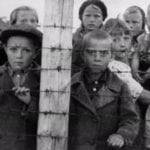 Weird Stuff
Weird Stuff  Weird Stuff
Weird Stuff  Our World
Our World 10 Archaeological Discoveries of 2025 That Refined History
 Weird Stuff
Weird Stuff 10 Fascinating Facts You Might Not Know About Snow
 Miscellaneous
Miscellaneous Top 10 Things Crypto Was Supposed to Change & What Actually Did
 History
History 10 Huge Historical Events That Happened on Christmas Eve
 Music
Music 10 Surprising Origin Stories of Your Favorite Holiday Songs
 History
History 10 Less Than Jolly Events That Occurred on December 25
 Weird Stuff
Weird Stuff 10 Funny Ways That Researchers Overthink Christmas
 Politics
Politics 10 Political Scandals That Sent Crowds Into the Streets
 Weird Stuff
Weird Stuff Ten Bizarre Facts About The Doge Meme
 Weird Stuff
Weird Stuff 10 Weird Things People Used to Do at New Year’s
 Our World
Our World 10 Archaeological Discoveries of 2025 That Refined History
 Weird Stuff
Weird Stuff 10 Fascinating Facts You Might Not Know About Snow
Who's Behind Listverse?

Jamie Frater
Head Editor
Jamie founded Listverse due to an insatiable desire to share fascinating, obscure, and bizarre facts. He has been a guest speaker on numerous national radio and television stations and is a five time published author.
More About Us Miscellaneous
Miscellaneous Top 10 Things Crypto Was Supposed to Change & What Actually Did
 History
History 10 Huge Historical Events That Happened on Christmas Eve
 Music
Music 10 Surprising Origin Stories of Your Favorite Holiday Songs
 History
History 10 Less Than Jolly Events That Occurred on December 25
 Weird Stuff
Weird Stuff 10 Funny Ways That Researchers Overthink Christmas
 Politics
Politics 10 Political Scandals That Sent Crowds Into the Streets
 Weird Stuff
Weird Stuff Ten Bizarre Facts About The Doge Meme
10 Horrifying Accounts Of North Korea’s Prison Camps
Any North Korean who commits a crime or questions his leaders or government is sent to a prison camp. The inmates are forced to do hard labor. They are also starved and beaten for the slightest offenses.
An Auschwitz survivor declared that these camps are just as bad—if not worse—than the Nazi concentration camps, and a UN commission stated that the prison system is a crime against humanity.
10 Jeong Kwang-il
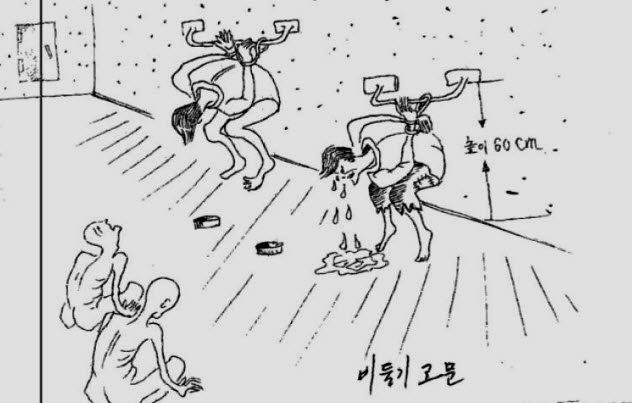
Jeong Kwang-il worked as a trader, and he made business deals with South Koreans in China, thereby associating with the enemy under North Korean law. Jeong was accused of being a spy, and he was dragged to a prison camp. Interrogators attempted to torture a confession out of him. He was beaten so severely that all his teeth were broken, and the back of his head was terribly injured and permanently scarred.
Jeong was tortured with a technique known as “pigeon torture.”[1] His hands were handcuffed behind his back, and he was hanged by the handcuffs so that his feet were suspended from the ground. Jeong was left in this position for days at a time. It was so painful that he “felt it was better to die.” Jeong confessed to his falsified crimes after 10 months of torture.
He was sent to Yodok, one of North Korea’s largest prisons, which housed around 50,000 inmates. A sign on the gates greeted the newcomers: “Let’s sacrifice our lives to protect the revolutionary leadership of Dear Leader Kim Jong Il.”
Many people died under the camp’s brutal treatment. Prisoners were awakened at 5:00 AM and given a bowl of rice with beans and corn. Then they were forced to work. In the spring, inmates were required to tend to a field. They had to cover around 1,170 square meters (12,600 ft2) in a day. If they didn’t, they were given less food.
The winter work was more difficult. The prisoners had to cut and carry huge logs, which were over 4 meters (13 ft) long, for more than 3 kilometers (2 mi). Many people died from accidents, and all who were injured starved to death since they could not work.
Jeong remained in the prison for three years until a senior guard decided that he had been wrongly accused. When he was released, he discovered that his home was gone and his family had disappeared. Jeong escaped North Korea within the month and fled to South Korea.
9 Jihyun Park

Jihyun Park’s father was ill, and he begged his family to leave North Korea. Park’s mother bribed the border guards to let them cross the river into China. She found a broker who promised a good job in China. Instead, Park was sold as a wife to an alcoholic farmer for 5,000 yuan ($750). Park spent six years as his slave, working 16 hours day. Her only source of happiness was her son, Chol.
He was five when she was arrested and deported to North Korea. She was sent to a labor camp where “the conditions were unspeakable” and the prisoners “were worked like animals.” Park and her fellow inmates had to clear the hills of trees so that crops could be planted. The prisoners were not allowed to wear shoes, and the skin on Park’s feet became broken and calloused from the rough stones on the ground. Her wounds became infected, and gangrene set in.[2]
Park was released because the guards wanted her to “die outside the prison camp.” She slowly recovered from her wounds, although she still walks with a limp. Park managed to escape to China. There, she found her son, who had been left to starve. She fell in love with another defector, and the three of them were granted asylum in Britain.
8 Kang Cheol Hwan
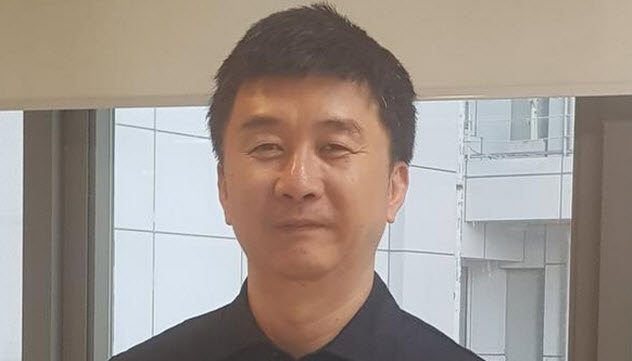
Kang Cheol Hwan’s grandfather was declared a traitor of the people, and he and his family were forced to go to a prison camp. Kang was only 10 years old when he entered Yodok. He immediately noticed the camp’s other children: They were all skin and bones, and they looked “worse than beggars.”
Kang was immediately sentenced to hard labor. He had to carry large logs on his shoulder for miles to the camp. If an inmate could not perform the expected work, the guards would order members of the work group to beat that inmate.[3]
Prisoners could not refuse a guard’s order. If they did, they were sentenced to a prison within the prison camp. Detainees were held for six months in a tiny cell, where they were forced to sit in cold muddy water. Few people survived the micro-prison.
Kang witnessed two soldiers escape. Both were captured and hanged. Thousands of prisoners were ordered to form one line and march by the hanged men. They were ordered to throw rocks at the bodies and yell, “Down with the traitors of the people!” Some people could not bear to throw stones, and the guards beat them.
Kang spent a decade in the camp before his family was released. Five years later, he and another former prisoner escaped to China, where he took a ship to South Korea.
7 Kim Young-soon
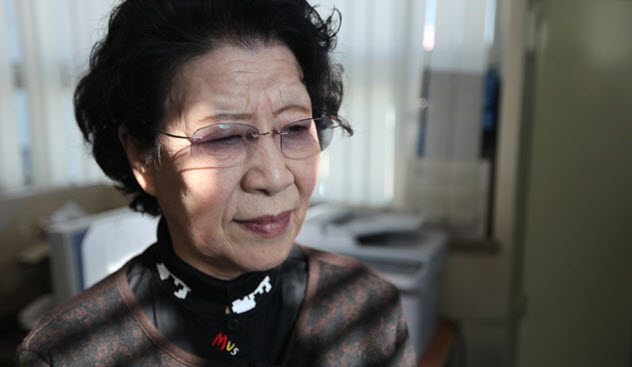
As a young woman, Kim Young-soon had danced for Kim Il Sung, the founding father of the nation. One day, she was summoned by the secret police, locked in a room, and interrogated for two months about her knowledge of senior party officials. She told them she knew nothing, but she was taken—along with her four young children and her parents—to Yodok prison camp.
Food was scarce in the camp. Prisoners were only given small amounts of corn and salt. If an inmate failed to meet his daily work target, his rations were reduced. Inmates supplemented their diet with anything they could find. Rats, salamanders, and snakes provided much-needed protein. Whenever a prisoner spotted the creatures, he would grab them and scarf them down raw. The inmates had no time or means to cook.
People never could find enough food, and everyone was weakened by malnutrition. Kim saw people “drop down dead every day,” and she watched most of her family die. She barely survived her nine years in the camp. Kim was released after a visiting military official, who knew her brother, recognized her. She bought false documents and crossed into China. From there, she made her way to South Korea.[4]
Kim later found out why she had been imprisoned. She was once close friends with Sung Hye-rim, the first wife of Kim Jong Il. The marriage circumstances were scandalous: Sung was already married and had a child, whom she left to be with Kim Jong Il. He was five years her junior. Officials wanted to keep Sung’s life a secret, so they imprisoned everyone who had ever known her.
6 Ahn Myong Chol
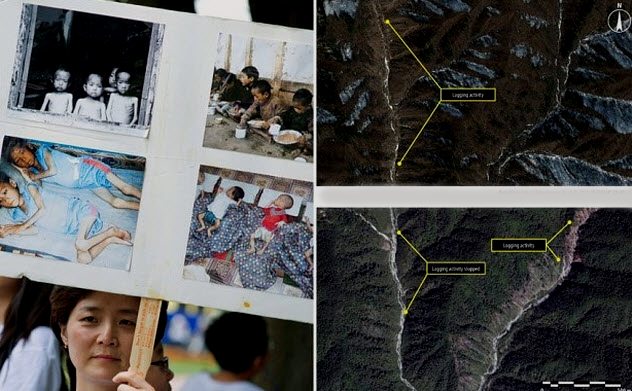
Ahn Myong Chol worked as a prison guard for over a decade. Ahn was trained that the prisoners were not to be treated as human beings. He was encouraged to kill any inmate who attempted to escape.
If a guard managed to kill an escapee, he was rewarded. Many guards shot innocent people so that these guards would be allowed to go to college. Ahn witnessed one of his colleagues order a prisoner to climb the barbed wire fence. The colleague shot the prisoner and left for college.[5]
The guards murdered for fun as well. Ahn watched two girls try to take a piece of a noodle from one polluted pond where the garbage was dumped. A guard walked by, and he kicked the kids into the small pond. Both girls drowned.
The event that horrified Ahn the most was when three dogs got away from their handler and attacked five children. Three of the children were killed instantly. The other two children were still breathing when the guards buried them alive. The guards petted the dogs and fed them special food as a reward.
Ahn’s father made a few drunken, negative remarks about the country’s leadership, and his family was detained. Ahn worried that he would be taken. So he drove his truck to the shore and swam to China. He later fled to South Korea.
5 Kim Kwang-Il
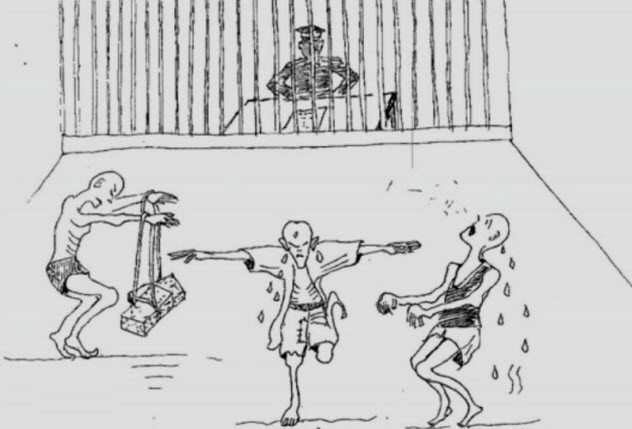
Kim Kwang-Il was starving, and he could not find enough food or money to survive. He gathered pine nuts and crossed the Chinese border to try to sell them. Kim was caught and arrested. North Korean officials were convinced that he had been smuggling across the border, and they tortured him to get a confession.
Kim was forced to pose in strange positions for hours. He had to pretend that he was riding a motorcycle or that he was a plane. Prisoners had to hold these positions until they sweated enough to fill a glass beneath them. People who fainted during an interrogation session were accused of faking their unconsciousness, and they had to start over. Kim could not bear this torture for long, and he confessed. He was sentenced to six years in prison.[6]
Kim was ordered to do difficult work in the camp. He had to move heavy logs from a mountain without any machines or tools to help him. It was a dangerous job. Rolling logs often crushed the inmates, and many of them were left with broken bones.
The hard labor killed many people, and prisoners piled the corpses on a cart. Once the cart was full, prisoners had to haul it up a mountain. They stuffed the bodies into a pot, which they lit on fire. When the bodies were completely burned, they collected the ashes left behind and used them to fertilize the fields.
Kim was released after he had served 29 months. He later managed to escape to South Korea.
4 Lim Hye-jin

Lim Hye-jin witnessed many terrible incidents during her seven years as a prison guard. One of the worst occurred when she was 20. Two brothers managed to escape the camp, and seven of their family members were killed on the spot in revenge. Many more prisoners were savagely beaten as collective punishment for the breakout.
The brothers were caught in China and returned to North Korea. Guards severely beat the men, and they beheaded the brothers in front of the other inmates. The prisoners were then forced to throw stones at the dead bodies.
Lim observed many acts of cruelty between the guards and their female prisoners. A guard would freely rape whichever prisoner caught his eye. If a woman became pregnant from these assaults, she was forced to have an abortion. If the pregnancy was too advanced, the guards would beat the babies to death or burn them alive.[8]
The guards committed more than sexual violence against the women. Lim witnessed an interrogation between a guard and a female prisoner. The guard grew angry with the woman and forced her to strip naked. Then he lit her on fire. He was not disciplined for this act. Guards were taught to see the prisoners not as human beings but “just as animals.”
Lim was caught trading in China, and she was sentenced to a short term in prison. She decided to flee the country after she was forced to parade naked before male guards. Lim managed to reach safety in South Korea.
3 Soon Ok Lee

Soon Ok Lee worked as the director of the Government Supply Office for 14 years. She was tasked with supplying food and materials to people. North Korea’s economy went into recession, and Soon was blamed. She was told that she was responsible for the people’s starvation. They tortured her for months to make her confess to the charges.
Soon was told that her husband and son would be safe if she confessed. After she did, she and her family were sent to a forced labor camp. The guards told the prisoners: “You are not human beings. You must think that you are beasts; otherwise you will not survive.”[8]
Soon was sent to work at the ironworks factory. The work was done in extremely high temperatures, and her spine started to shrink. Her back curved, and her shoulder bones started to stick out. Soon got into trouble after she tried to hide a faulty piece of shirt, and she was sentenced to the tiny “punishment cell.” She could not stand or lie down while inside. Soon had difficulty walking for weeks after she was released.
She was tortured several other times while she was imprisoned. She was beaten with a leather strap and kicked in the head. Her teeth were broken, the left side of her face was paralyzed, and she suffered permanent headaches.
Soon was freed after seven years. A few years later, she and her son escaped to South Korea via China.
2 Hyuk Kim
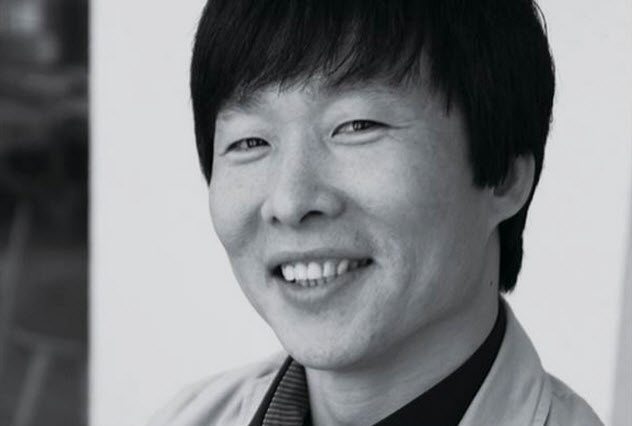
Hyuk Kim was a homeless 16-year-old who traveled to China in search of food. He was caught, arrested, and sentenced to three years in prison. Kim quickly lost all feelings of humanity. He became “like an animal. [ . . . ] No thinking. No free will. Just fear.”[9]
His actions became mechanical. He received breakfast at 7:00 AM—a handful of cornmeal and 50–90 soya beans. Then he worked until noon, when he was given another small meal before heading back to work. Dinner was served at 7:30 PM, and then the prisoners were ordered to memorize the rules and regulations of the camp. If one prisoner got one word wrong, the entire team had to stay up until everyone could recite the rules perfectly. They usually went to bed around 10:00 PM.
Like all the prisoners, Kim could only think of food. He would sometimes manage to catch a rat. He would skin the rodent, dry the meat out, and eat it raw. If he attempted to cook the rats, the guards would smell the meat or the fire and savagely beat him.
Some prisoners managed to gain extra food through barter. Cigarettes were a highly desired item in the camp. Prisoners scraped them together by stealing the guards’ half-smoked butts off the ground and turning the remaining tobacco into new cigarettes. This was extremely dangerous as anyone caught making or smoking these contraband cigarettes was severely beaten by the guards.
Kim was released after eight months, and he escaped to South Korea.
1 Ji Hyeon-A

Ji Hyeon-A left North Korea for China three times. Each time, she was caught and sent back to North Korea. Ji was pregnant the third time she was returned. The North Korea regime does not tolerate mixed race babies, and anyone who got pregnant in China was forced to have an abortion. At a local police station, Ji was forced to have an abortion without medication.
She was then sent to a labor camp where she witnessed the abuse of other pregnant women. The women were forced to do hard labor, and she could hear the pregnant mothers screaming at night as they miscarried their babies.
Ji witnessed a woman give birth at eight months after a full day of work. The mother was so happy to hold her child, but that moment was short-lived. A guard ordered her to drown her baby. The mother pleaded for mercy, but she eventually did as she was told.[10]
Ji was released from the prison. She escaped North Korea and was reunited with her family.
Read more insane facts about North Korea on 10 Insane Facts About North Korea and Top 10 Ways To Escape From North Korea.
